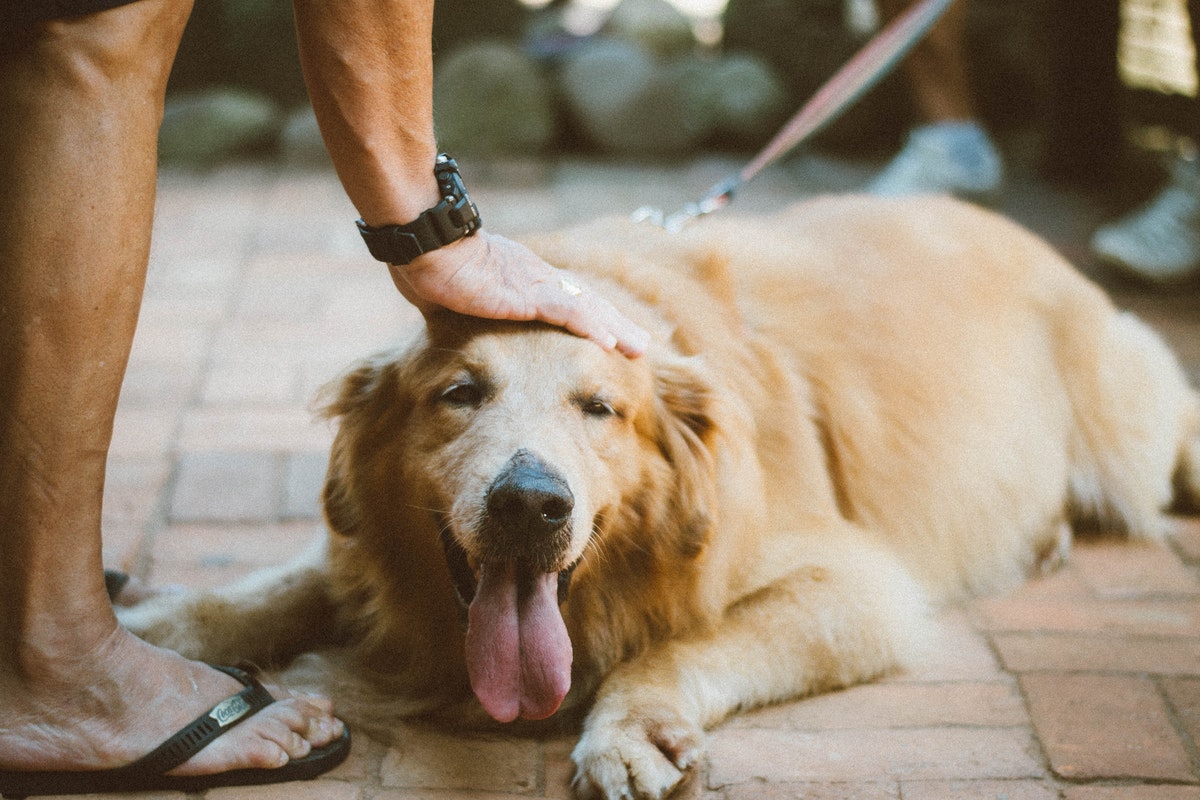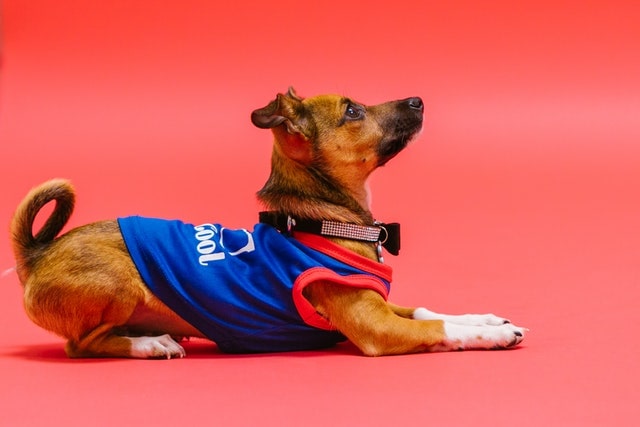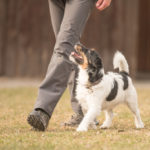If you want to take your dog out and about with you while shopping or visiting a friend, you will want to train your dog how to act and behave properly in public.
Of course, if you’ve tried to train your dog before, then you probably know that it takes time and patience.
Some breeds pick up such training really easily, but some are more stubborn than others.

However, training your dog to lie down can help them feel more comfortable when you are waiting somewhere public and keeps them out of the way of other people.
So – how do you teach your dog how to lie down?
Here we are going to go through the methods on how to teach your dog how to lie down so you can keep them close and calm with just a word.
Let’s get started!
First Things First
Before you can teach your dog how to lie down, you need to teach them how to sit.
Learning to sit is the first step to lying down on command, so it’s important that you train your dog one step at a time.
If your dog hasn’t mastered sitting, then you aren’t going to have much luck when it comes to trying to get them to lie down.
So, first things first – teach them how to sit.
A few things that can help teach your dog how to sit down includes getting them a special mat (this can then later be reused when training them to lie down) so they feel more comfortable, plus some extra tasty but low calorie treats so you don’t overfeed your dog while training.
Once your dog can sit on command, it’s time to move onto teaching them how to lie down.
There are actually a few methods you can try when training your dog to lie down, so we are going to cover the two most popular methods as well as some hints and tips that can help you out when dealing with an especially stubborn pooch!
Method Number One

To start teaching your dog to lie down, tell them to sit and then grab a treat.
Hold the treat close to their nose so they can smell it but not close enough that they try to eat it. If your dog tries to eat the treat, tell them no and re-command them to sit.
Then, lure the dog down using the treat by lowering it very slowly to the floor. Ideally, your dog will follow the treat downwards and lie down on the floor. Pull the treat towards you and away from your dog which will encourage them to lean forward.
However, most dogs won’t get this on the first try and will either pop back up, just lower their head or lower the front half of their body down.
Each time this happens, pull the treat back and start again, telling the dog to sit once more. Do not give your dog the treat until they are lying fully on the floor.
After a few tries, they should start to get the hang of it – this is when you can start saying the command ‘down’ when the dog is lowering themselves to the floor.
Eventually, you can try taking the treat away and command them to go ‘down’. Your dog should lie down all the way instantly – if not, then more training is required.
The video below is an excellent demonstration of this:
Method Number Two
This method works a little differently but it’s one worth trying if your dog is not reacting well to the first method. So, use this one as your back-up.
Begin by holding a treat in your fist and placing your fist on the floor.
Your dog should be able to smell the treat and try to get it out of your hand but you need to wait until they give up and lie on the floor.
Once your dog lies down, open up your first and allow them to take the treat. Remember to praise them and give them a fuss for lying down.
Continue this practice, rewarding them with a treat every time they lay down – the dog will soon associate lying down with treats.
If they are almost there, remember to urge them on until they finally lie down.
As soon as your dog starts to lie down, say the word ‘down’. Just with how they associate lying down with treats, they will also begin to associate it with the command.
Add A Release Command
Once your dog can lie down on command, it’s time to start introducing your release command. This is what will signal to your dog that they have permission to get back up.
You may already have a release command that you use for other commands, so you can just reuse that one.
Let your dog lie down for around thirty seconds and then say your release command. If your dog is fidgety during this period then command them to stay.
Start increasing the lying down period and work your way up to your dog staying down until you give the release command.
Hints And Tips

Here are some things to keep in mind when training your dog how to lie down.
Avoid pushing your dog down when training.
It’s very tempting to help give them a little shove to guide them down, but dogs do not learn this way and you will not be speeding up the training process.
Be patient and your dog will eventually get it on their own.
Try not to mix commands. The general rule should always be that ‘down’ means to lie down, but ‘off’ means to get off something.
You should never tell your dog to lie down and say ‘down’ when you mean to tell him to get off something like your bed or couch.
Mixing these two commands will confuse your dog and make training more difficult.
Plus, you need to be patient. Training a dog is a long process and lying down is one of the trickiest ‘tricks’ for a dog to learn.
While most dogs pick up commands like ‘stay’ or ‘sit’ really easily, ‘down’ is more difficult because it puts the dog in a vulnerable position that their instincts tell them not to be in.
So, remember to be patient with your dog and not to give up – they will get it eventually.
Conclusion
Training your dog to lie down can be a really useful command for when you take them into public spaces.
It allows them to stay safe in one spot and can even lie between your feet to keep them out of other people’s paths, especially when you sit down to eat!
So, have a bit of patience and try out either one of the above methods, and your dog will be lying down in command in no time!
- 8 Signs That Your Dog Is In Heat - November 8, 2022
- Why Is My Dog Whining Whilst Carrying A Toy In Their Mouth? - August 17, 2022
- Reasons Why Your Dog’s Poop Is White And What To Do About It - August 17, 2022








